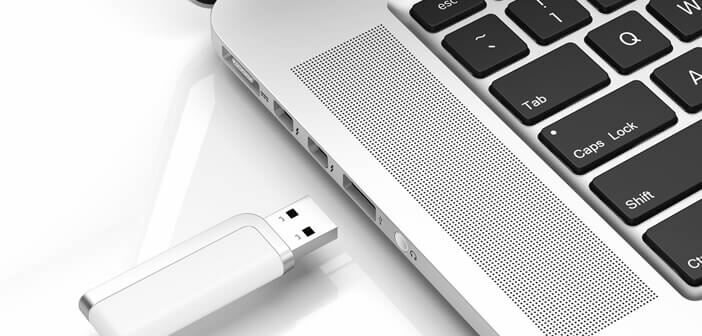
Any Apple fan today has a USB stick. Problem, some of its storage accessories need to be formatted before they can be used to store files on them. In this article, we will detail the different steps required to format a USB drive from a Mac computer..
Format a USB flash drive using MacOS Disk Utility
For those of you who are used to transferring files between different devices, you have certainly noticed that some USB sticks offer lower storage capacities than those displayed by the manufacturer.
Rest assured, this is normal. Most of the time this is a disc format problem. Indeed some are compatible with an operating system and others not. To put it simply, NTFS works on Windows and HFS + on Mac..
If you work simultaneously on these two types of computers (PC and Mac), it is advisable to format your USB key in ex-FAT. Unlike FAT32, it can handle files over 4 GB. This format is also used by default on SD cards over 32 GB.
Erase the contents of your USB key
The Disk Utility that comes with your Mac computer has all the tools you need to format a removable hard drive, USB drive, or SD card. There is therefore no need to download a utility dedicated to this type of task from the internet..
Connect your USB key to your Mac
Go to Applications then to Utilities
Click on the disk utility
You can also launch this software by using Spotlight
Press the Command + Space key to open the dialog box of the Apple search engine
Type disk utility and press Enter key to launch the application
Select your USB drive in the left column
You will see all the details of the storage device (type of connection, serial number, total capacity, write status etc. ..)
Then click on the Delete button at the top of the window
Give a name to your USB key
Select ex-FAT in the format section
Once everything is set, click on the erase button to start the formatting process. Depending on the size and type of key, this can take between one and four minutes. You can start transferring files to the USB drive only after the operation is complete.
Importantly, when you format a USB drive on a Mac or other device, you automatically delete everything on it. If the key is new, this will not be a problem. Otherwise, you will have to take care to save all your content.
Even if you are as careful as possible, no one is safe from error. You may accidentally erase data or have problems with your USB drive. Whatever the reason, be aware that there is software available to recover lost files.
A thorough scan will track down deleted data and rebuild your files. Note that these utilities have a filter (name, size, type of file, date of deletion) to more easily locate lost files.